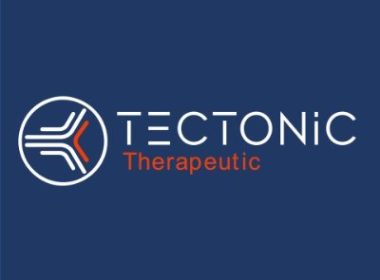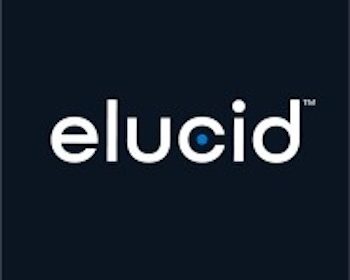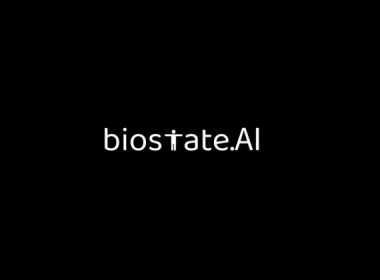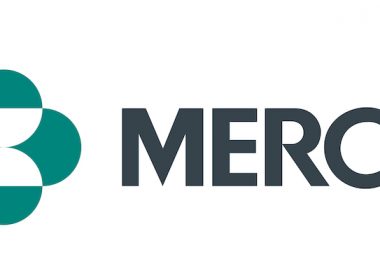WATERTOWN, Mass., Oct. 29, 2025 (GLOBE NEWSWIRE) — Tectonic Therapeutic, Inc. (NASDAQ: TECX) (“Tectonic”), today announced positive topline results from the Phase 1b Part B acute hemodynamic clinical trial of TX45, a long-acting, Fc-relaxin fusion protein, in patients with Group 2 PH‑HFrEF. The topline data showed that a single intravenous dose of TX45 was well tolerated in this patient population and resulted in meaningful improvements in both left heart function and pulmonary hemodynamics.
Coronary/Structural Heart
Elucid Launches PlaqueIQ Image Analysis Software for the Carotid Arteries
BOSTON–(BUSINESS WIRE)–Elucid, an AI medical technology company focused on providing physicians with a more precise view of atherosclerosis to drive patient-specific therapeutic decisions, announced the launch of its PlaqueIQTM image analysis software for the quantification and classification of plaque morphology in the carotid arteries. The first and only CT-based plaque analysis […]
Biostate AI’s Indian Subsidiary Bayosthiti Partners with Narayana Health to Build World’s Largest India-Specific Cardiac AI Dataset
Landmark 12,000-patient study addresses critical gap in global healthcare: South Asian populations face heart disease at younger ages but are diagnosed with tools calibrated for Western genetics. Partnership aims to prevent heart attacks years before they occur. BENGALURU, India and…
FastWave Medical Presents First-in-Human and Pre-Clinical Data for Sola™ Coronary Laser IVL System at TCT 2025
Findings demonstrate safety, procedural success, and imaging-confirmed calcium modification using a next-generation laser intravascular lithotripsy (IVL) platform. MINNEAPOLIS, Oct. 29, 2025 /PRNewswire/ — FastWave Medical presented new first-in-human (FIH) and pre-clinical data for its…
Late-breaking iMODERN findings presented at TCT 2025 and published in the New England Journal of Medicine highlight new evidence to guide treatment choices for heart attack patients
Philips iFR technology
October 29, 2025 3-Year data from the largest global trial to date using Class I, Level A iFR in heart attack patients shows treating additional stenoses in the same procedure showed no significant difference in major outcomes compared with waiting for follow-upAdditional results from the ILIAS ANOCA study highlight the sustained benefits of physiology-guided assessment and tailored medical therapy for patients with angina and no obstructive coronary arteries Amsterdam, the Netherlands – Royal Philips (NYSE: PHG, AEX: PHIA), a global leader in health technology, today announced late-breaking results from the iMODERN trial (Instantaneous wave-free Ratio Guided Multivessel Revascularisation During PCI for Acute Myocardial Infarction) at the Transcatheter Cardiovascular Therapeutics (TCT) 2025 conference, the world’s leading meeting for interventional cardiology. The study compared immediate versus delayed treatment of additional narrowed arteries in heart attack patients to determine whether treating all blockages in one procedure is as safe and effective as waiting for a follow-up procedure. The study compared immediate versus deferred treatment of additional narrowed arteries in heart attack patients to determine whether treating all blockages in a single procedure is superior to waiting for a follow-up procedure – a key question, since many patients have multiple diseased arteries and the optimal timing for complete treatment remains uncertain. In today’s practice, when patients suffer a serious type of heart attack (STEMI), cardiologists urgently open the blocked artery causing the attack. But many of these patients also have disease in other arteries. Often these additional narrowed arteries are not treated right away, either due to time restraints, patient stability, resource constraints or because they stay unnoticed. They may be treated later in a separate hospital stay or not at all, leaving uncertainty about the best timing and approach. The new findings show that patients can safely have additional arteries treated immediately during the first procedure to treat the acute event, rather than during a later second intervention. By confirming the safety of extending Class I, Level A-recommended iFR to non-stable patients, the results offer physicians the opportunity to complete treatment in one session, without compromising long-term outcomes. The iMODERN trial is the largest study to date testing iFR* in the acute heart attack setting, expanding the evidence base for a tool already strongly recommended (Class I, Level A) in stable patients. The findings are published in The New England Journal of Medicine (NEJM), underscoring its global scientific significance and impact on cardiology practice. “These results address one of the longest-standing questions in interventional cardiology,” said Prof. Niels van Royen, co-principal investigator, Radboud University Medical Center, The Netherlands. “Measuring and eventually treating additional arteries can be performed during the first procedure or during a staged procedure. That means cardiologists can feel confident offering patients a complete solution in one sitting when it’s appropriate.” The iMODERN study enrolled 1,146 patients across 41 hospitals in 14 countries directly addressed this question. Patients were randomly assigned to one of two treatment strategies: either immediate physiology-guided treatment of additional narrowed arteries during the first procedure using instantaneous wave-free ratio (iFR), or staged treatment guided by cardiac Magnetic Resonance Imaging (MRI) carried out within four days to six weeks after the heart attack. The study’s main endpoint combined three outcomes: death, another heart attack, or hospitalization for heart failure over three years. After three years of follow-up, the trial found no significant difference in major outcomes – including death, repeat heart attack, or hospitalization for heart failure – between the two approaches. By confirming that both approaches are backed by solid evidence, the trial offers patients more certainty and more personalized care. “Flexibility is critical in real-world practice,” added Prof. Dr. Robin Nijveldt, co-principal investigator, at Radboud University Medical Center, in the Netherlands. “Some patients may benefit from immediate treatment, while others are better served by waiting. iMODERN is a pragmatic study that shows that an immediate intervention is not necessarily better than waiting, if patients are offered a CMR to evaluate the need for a second intervention, giving physicians the evidence they need to tailor decisions to each patient.” “These results complement current international guideline recommendations (Class I recommendation, Level A evidence) for complete revascularization in STEMI,” said Dr. Darshan Doshi, practicing interventional cardiologist and Head of Medical & Clinical at Philips Image-Guided Therapy Devices. “By integrating physiological assessment, iMODERN’s evidence demonstrates that cardiologists can follow these findings for full revascularization while also tailoring treatment to each vessel’s true ischemic relevance.” Complementary evidence from ILIAS ANOCA In related findings presented at the same conference, the ILIAS ANOCA (Inclusive Invasive Physiological Assessment in Angina Syndromes – Angina with No Obstructive Coronary Artery Disease) study further demonstrated the value of physiology-guided decision-making — this time in patients with angina and no obstructive coronary arteries (ANOCA). The ILIAS ANOCA study evaluated the impact of coronary function testing (CFT) in patients whose coronary arteries appear unobstructed on angiography but who continue to experience angina. Conducted across five cardiac centers in the Netherlands and Germany (n=153), the investigator-initiated, randomized, blinded-arm controlled trial compared standard care with CFT-guided medical therapy using Philips Doppler FloWire and FloMap systems. The study found that ad-hoc CFT followed by tailored therapy significantly improved patient-reported angina symptoms and quality of life at six months, with a mean 9.4-point gain in the Seattle Angina Questionnaire summary score (95% CI 3.9–14.9; p=0.001). There were no procedure-related complications or major adverse cardiac events. These results confirm and extend the earlier CorMiCA findings, supporting CFT as a Class I, Level A recommendation in ANOCA patients and demonstrating the potential of Philips Doppler technology to guide individualized treatment strategies safely and effectively. The 12-month results presented on October 26th demonstrate the sustained benefits of CFT-guided care. iFR and MRI technologyPhilips physiology solutions – including its instantaneous wave-free ratio (iFR) pressure wires and software – were used to guide immediate treatment decisions in the trial. Philips also provides advanced cardiac MRI technology, which guided the delayed strategy. By enabling both the invasive and non-invasive approaches evaluated in iMODERN, Philips supported the generation of robust evidence to help guide clinical practice worldwide. * iFR (instantaneous wave-free ratio) is a minimally invasive way to measure blood pressure through the coronary arteries, helping physicians decide which blockages require stenting. For further information, please contact: Joost MalthaPhilips Global External RelationsTel.: +31 6 1055816E-mail: joost.maltha@philips.com About Royal Philips Royal Philips (NYSE: PHG, AEX: PHIA) is a leading health technology company focused on improving people’s health and well-being through meaningful innovation. Philips’ patient- and people-centric innovation leverages advanced technology and deep clinical and consumer insights to deliver personal health solutions for consumers and professional health solutions for healthcare providers and their patients in the hospital and the home.Headquartered in the Netherlands, the company is a leader in diagnostic imaging, ultrasound, image-guided therapy, monitoring and enterprise informatics, as well as in personal health. Philips generated 2024 sales of EUR 18 billion and employs approximately 67,800 employees with sales and services in more than 100 countries. News about Philips can be found at www.philips.com/newscenter.
Attachment
Philips iFR technology
Medtronic announces launch of Stedi™ Extra Support Guidewire to enhance Medtronic TAVR system performance
Stedi Extra Support Guidewire Delivers Enhanced Support for Stability, Safety, and Predictability During Valve Deployment for Aortic Stenosis Medtronic plc, a global leader in healthcare technology, today announced the launch of the Stedi™ Extra Support guidewire, designed to enhance performance of the Evolut™ transcatheter aortic valve replacement (TAVR) platform […]
TCT 2025 Late-Breaking Science: Quantitative Assessment of Non-Calcified Plaque Volume Drives Risk for Myocardial Infarction and Death
CONFIRM2 Registry Demonstrates Prognostic Value of AI-Based Plaque Characterization Beyond Stenosis Severity October 27, 2025 (DENVER, CO) – Cleerly, a leader in AI-based cardiovascular imaging, presented new, late-breaking science from the international CONFIRM2 Registry at the Transcatheter Cardiovascular Therapeutics (TCT) 2025 Conference at the Moscone Center in San Francisco, […]
Landmark STORM-PE Randomized Controlled Trial Finds Computer Assisted Vacuum Thrombectomy (CAVT) with Anticoagulation Superior to Traditional Anticoagulation Treatment for Pulmonary Embolism
ALAMEDA, Calif. – Oct. 27, 2025 – Penumbra, Inc. (NYSE: PEN) announced the results of the landmark STORM-PE randomized controlled trial (RCT), which found that the use of mechanical thrombectomy, specifically computer assisted vacuum thrombectomy (CAVT™), with anticoagulation achieved superior reduction in right heart strain compared to anticoagulation therapy alone in […]
U.S. FDA Approves Updated Indication for WINREVAIR™ (sotatercept-csrk) in Adults with Pulmonary Arterial Hypertension (PAH, WHO* Group 1 Pulmonary Hypertension) Based on Phase 3 ZENITH Study
Adding WINREVAIR to background PAH therapy improved exercise capacity and WHO functional class (FC), and reduced the risk of clinical worsening events, including hospitalization for PAH, lung transplantation and death ZENITH data add to growing body of evidence supporting a positive benefit risk profile of WINREVAIR in a broad […]
Six-month SPYRAL AFFIRM results from Medtronic demonstrate blood pressure reductions in high-risk cardiovascular patients
Medtronic also announced completion of enrollment in SPYRAL AFFIRM, which aims to build robust real-world evidence across traditionally underserved patient populations Medtronic plc, a global leader in healthcare technology, today announced the completion of enrollment and the first results from the High Cardiovascular Risk Patient Cohort of the SPYRAL AFFIRM […]











